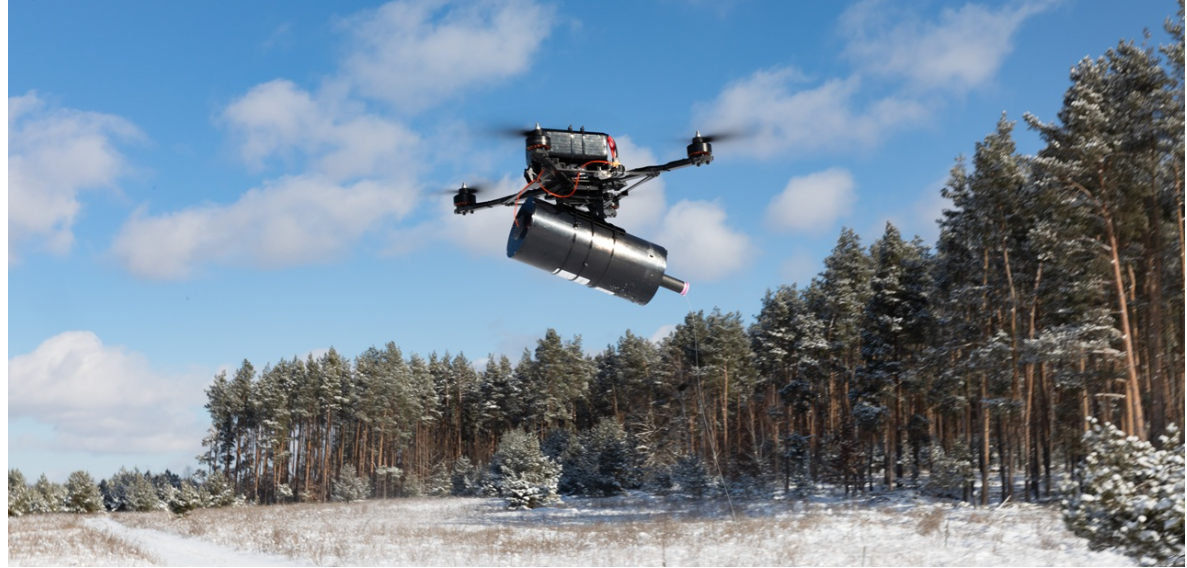Russian Fiber Optic Drones Are Reaching Farther Into Ukraine

Fiber optic drones are more accurate, more deadly, and harder to intercept than any previous drone model—with major potential consequences for soldiers’ morale.
Fiber optic-controlled battlefield drones are proliferating as a means to defeat active jamming measures in the ongoing Ukraine conflict. Russia introduced the technology first, but Ukraine soon caught up, and both sides are now manufacturing thousands of the drones per month. Fiber optic drones carry their thin control wires on spools which unwind as they fly. These control wires in turn connect to the drone operator’s console, allowing clear and uninterrupted data and navigation—though for obvious reasons they also limit range and maneuverability. Fiber optic drones are now so ubiquitous along the battle lines that discarded wires litter the fields and forests of eastern Ukraine.

Video has emerged from a recent Russian fiber optic drone attack on the Ukrainian city of Kramatorsk, located 12 miles behind the line of contact between Russian and Ukrainian forces. Kramatorsk is home to 100,000 Ukrainians—roughly half its pre-war population—and has also become a major Ukrainian military logistics hub.
The remarkably clear video feed shows how effective the fiber optic data stream is, and how it aids targeting. The operator clearly chooses a parked pickup truck and smoothly hits it right on the engine compartment, blowing the front off the truck. It looks as though the operator deliberately chose an unoccupied vehicle—probably in an attempt to sow terror, as opposed to causing casualties.
A civilian-owned pickup truck does not materially affect the Ukrainian war effort. But it does impact the public’s morale, even in a city so close to the fighting front. Accurate drone strikes, even small ones, can unnerve even the stoutest-hearted civilian; if a Russian drone jockey miles away can target and destroy a pickup truck with pinpoint precision, it follows that he could destroy any other target as well. Knowing that one’s safety, or even life, could be subject to the whims of an enemy army is profoundly unnerving.
Anti-Drone Nets Are Ubiquitous in Eastern Ukraine
Ukrainian officials are already erecting extensive nets along important logistics corridors and around sensitive installations. Calls are mounting for cities like Kramatorsk to do the same for their streets and public areas. Nets obviously will not stop heavier weapons, but they are just the thing for smaller FPV drones—at least for now. Even Russia has protected some of its cities with nets after the Ukrainians demonstrated the ability to hit back.
Both sides are extending fiber optic controlled drones’ range. The furthest-reaching examples can reach 25 miles in perfect conditions, but a 30-mile range is probably close to being achieved. These drones are not, however, infallible. Environmental factors, most notably wind, can inhibit their flight and range, as well as obstacles like trees in which the wires can catch. The extra weight from the wire spool also creates drag and limits maneuverability. Finally, the small munition attached to the drone adds weight and wind resistance.
Nor have Ukrainian forces been idle in developing active counter-measures. The “Magyar Birds” Brigade within the Armed Force of Ukraine has developed a system of mobile radars to provide early warning against FPV drones. The unit then launches interceptor drones to bring them down. Magyar Birds Brigade commander Robert Brovdi recently released a video purportedly showing one of his interceptors bringing down a Russian fiber optic FPV drone.
As with any air defense system, this method is not airtight. Drones can and do get through the radar network. But drone warfare is very much an evolving paradigm, and more effective countermeasures are expected as the war continues.
Russia’s Drones Are Getting Better—with Ominous Consequences
Fiber optic drones are a rising concern to many Ukrainians. Serhii Sternenko founded the Sternenko Community Foundation, which is reportedly Ukraine’s largest non-state supplier of FPV drones. He is calling for more investment in civilian defenses like nets. He also believes cities like Kramatorsk should restrict civilian movement or even evacuate non-combatants altogether.
“It will only get worse,” Sternenko stated, “because technology doesn’t stand still.”
Sternenko is certainly correct. Early and current fiber optic FPV drones often look slapped together; zip ties attach the spool and the munition to the small quadcopter drone itself. But makeshift drones can nonetheless be extremely effective. These drones have proven their worth, and both sides are actively pursuing improved models to extend their range and increase their effectiveness.
Drones, both offensive and defensive, are the Ukrainian battlespace’s most common weapon systems by far. That isn’t going to change as each side seeks to perfect the new way of war.
- Questions and Answers
- Opinion
- Motivational and Inspiring Story
- Technology
- Live and Let live
- Focus
- Geopolitics
- Military-Arms/Equipment
- Beveiliging
- Economy/Economic
- Beasts of Nations
- Machine Tools-The “Mother Industry”
- Art
- Causes
- Crafts
- Dance
- Drinks
- Film/Movie
- Fitness
- Food
- Spellen
- Gardening
- Health
- Home
- Literature
- Music
- Networking
- Other
- Party
- Religion
- Shopping
- Sports
- Theater
- Health and Wellness
- News
- Culture

